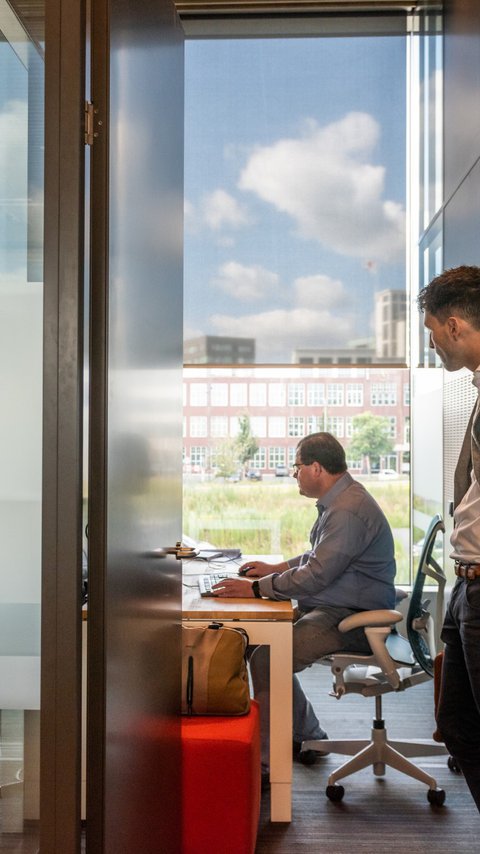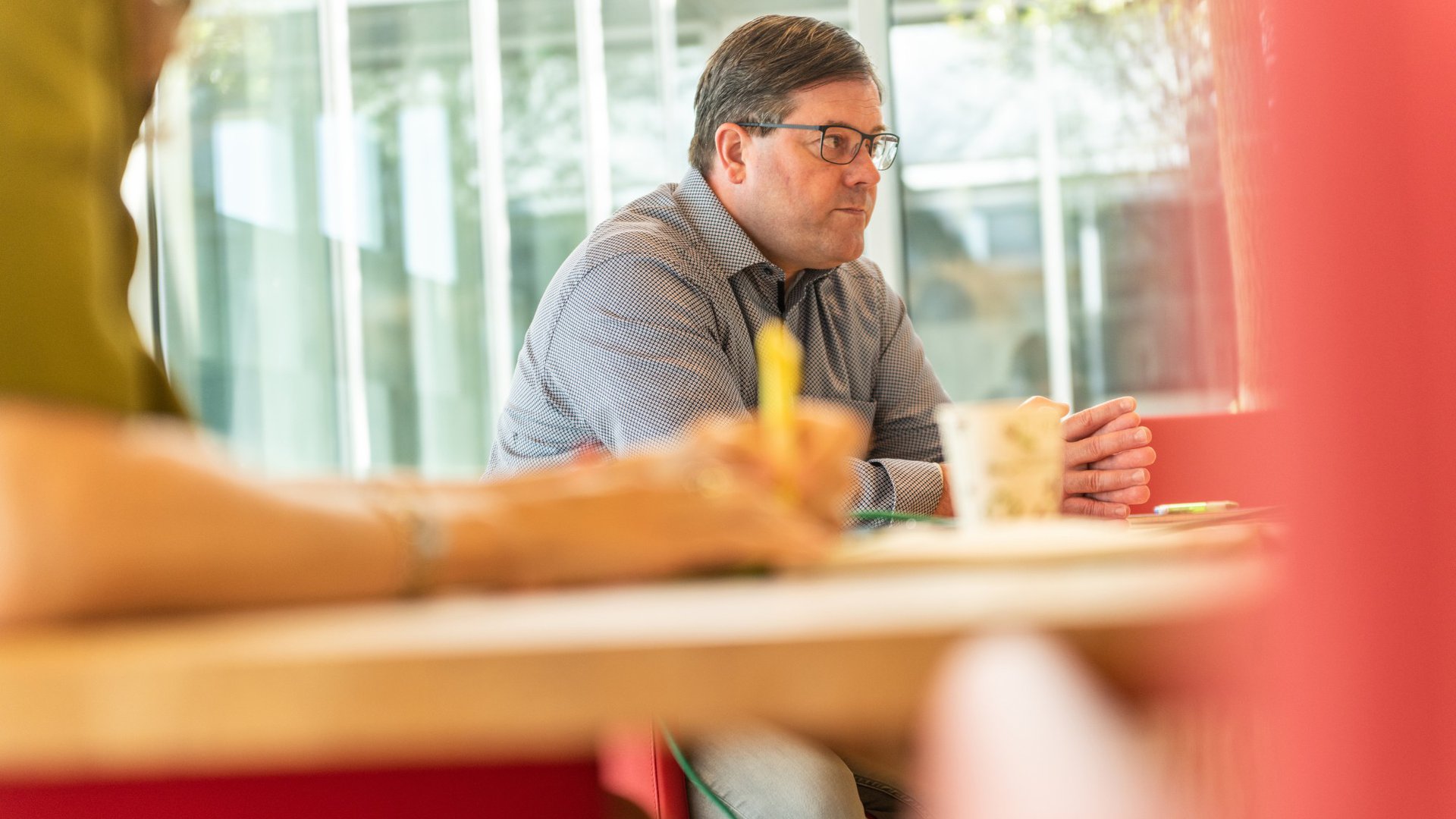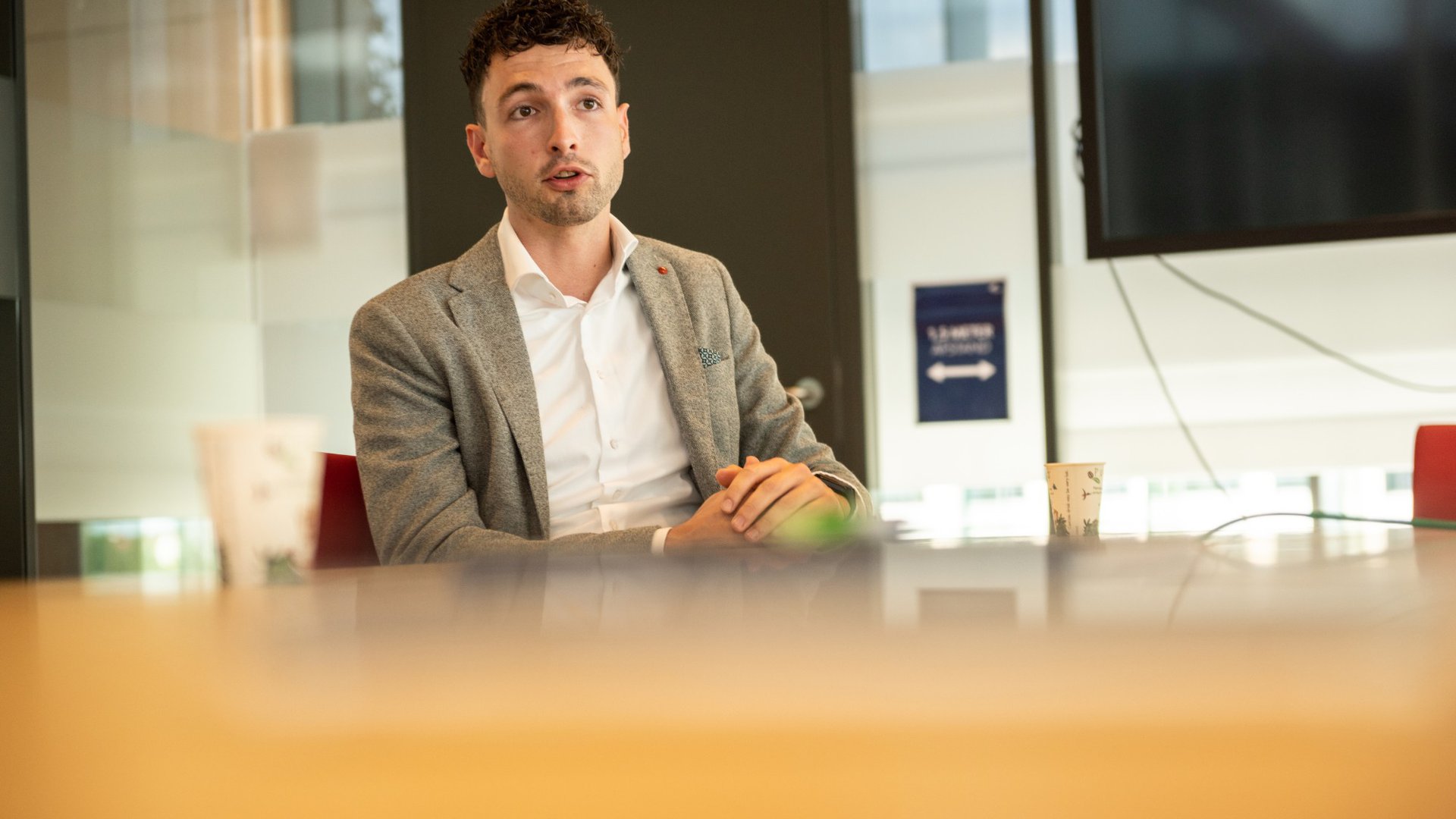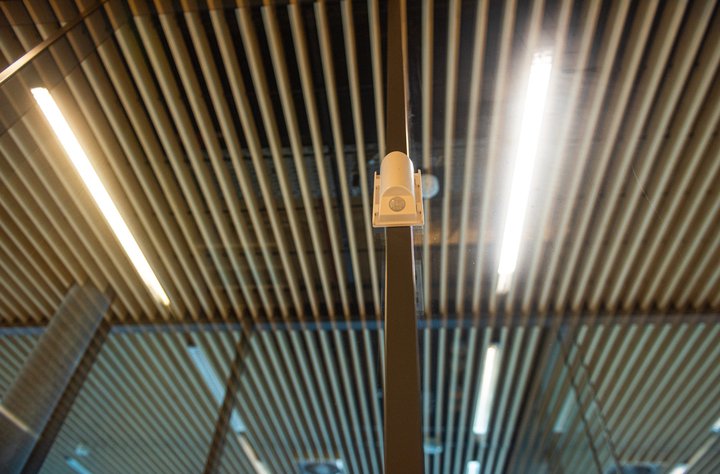
To guarantee a safe return to the work floor after the coronavirus closure, the Venlo municipal office was fitted with BeSafe within ten days. This Heijmans solution consists of 510 sensors, a work place reservation system and an online dashboard, which shows the municipality the real time occupancy and use of work places at a single glance. And there are many more features possible. “This data is worth its weight in gold.”
Whoever enters the Venlo municipality office, will see a light and spacious room full of green. This cradle to cradle building is, amongst others, sustainable, self-sufficient in energy, water and air and offers the most pleasant work environment. Making it an example for other municipalities, though that’s absolutely no reason to be complacent, according to facility manager Ruud Geraedts. “A building should evolve with time. In 2016 this building was state-of-the-art, but four years have passed by now.
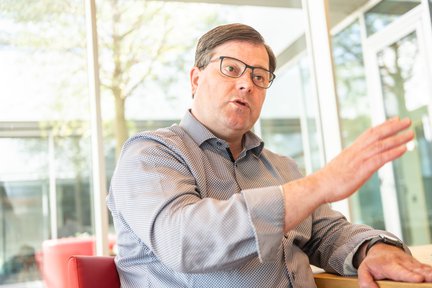
A couple of years ago, I started looking into data-driven work, as I noticed we were mostly playing it by ear. Colleagues frequently told me it was too crowded in the building and asked me if it was possible to create extra work places. But then I would often see empty work places when I was walking my rounds. I needed solid proof to make them realise what was really happening in the building, in order to refute their ideas.”
Act fast
Corona increased Geraedts’ interest in data-driven work. “Then, all of a sudden, the question arose: how do we ensure that our employees can return safely to the work floor? Data could be the answer.” Geraedts contacted various parties and ended up choosing BeSafe, a solution by data-driven service provider BeSense which enables safe working in an office environment. “We opted for BeSafe as BeSense works with depersonalized data – we don’t want employees to feel they are being checked up on. And also, because we didn’t have much time and BeSense was able to act fast”, Geraedts explains.
Pleun Retera, sales manager at BeSense, confirms that the preparatory phase went faster than usual. “An implementation process usually takes up six weeks. However, we didn’t have that time. It helped that they were clear about what they wanted: the municipality wanted to monitor the occupancy rate of work places and offer end-users the opportunity to reserve a work spot. As our goal was clearly defined, we were able to shorten our implementation process to three weeks. After that, one of our teams installed 510 sensors in one day and the system went live within eight working days.”

Clear dashboard
The sensors in the municipality office were installed under desks and onto the walls of six meeting rooms. The infrared sensors register warmth and movement. The sensors send everything they register to the three gateways located in the building, which then use the independent LoRA-network to forward the data on to the BeSense system. Client manager Lars van der Pluijm is responsible for the dashboard which provides the client with insight into the data. “I discuss with the client what information he would like to have at his disposal.”
“Ruud’s first priority was the occupancy rate of work places. So, I created a dashboard which would give him insight into the occupancy and use at a single glance. He can also apply filters to check the occupancy rate per day, per work place or per department, and to compare work places.”
This dashboard provides Geraedts with a clear overview and offers him the information he needs now. “However, it is up to me to ask the right questions, so we can continue to develop it together. This goes very smooth with BeSense. If I call, I always get a quick and clear answer. And if I have a technical question, they will straightaway arrange for a MS Teams meeting, and include one of their specialists.
In that respect, I really feel like a king. And that is exactly what I am looking for, because as a municipality we are spending public money. In that case, you don’t want to feel like you have to join a long waiting line over and over again.”

Countless possibilities
Now that the first phase – monitoring the occupancy rate during the set-up phase – has almost passed, Geraedts is contemplating other ways in which he could put the data to use. “Maybe we will provide employees with insight into available work places or start using a reservation system.” He is certain that this is the beginning of a far larger development.
“I can already see that this data is worth its weight in gold: we are using it so we can guarantee the safety of employees. Still, the future offers so much more. We could adapt the cleaning process to the occupancy rate. And if we notice a vacant work place, we need to establish the reason for its vacancy. Is it because the desk is broken, or because the nearby coffee machine is making too much noise? This way, you will be able to lay out the building more efficiently. This would be of great help to us at Facility Management, because this way, we will be able to do a far better job at carrying out our main task: offering employees an as pleasant possible work environment.”
